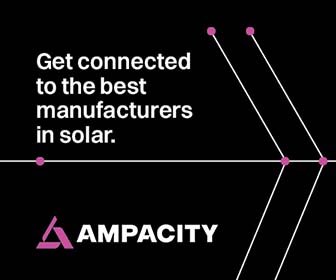Solar in the Desert
Why water-free cleaning robots make economic sense
With global solar adoption rates increasing rapidly—55 GW is expected to be installed this year alone—there are still a number of obstacles the solar industry needs to tackle before it can become a larger portion of the energy mix. As panel prices have bottomed out in recent years, there has been an increasing interest in reducing “soft costs” to further lower the price hurdles of solar power. These costs include customer acquisition, permitting, supply chain logistics, financing, installation, labor, operations, and maintenance.
And while a recent report from the Lawrence Berkeley National Laboratory found that soft costs are in fact declining, they still comprise more than half of a solar system’s end cost. For long-term price reductions that lower soft costs throughout the 20-25 year life of the system, the industry is focusing on improving operations and maintenance (O&M) procedures through unique technologies and software.
One crucial O&M practice that is often overlooked is solar panel cleaning. When panels are not cleaned, soiling creates a huge problem, cutting energy production by up to 40 percent. And nowhere is soiling more magnified than in the desert, where dust storms can cause accumulations that can block out half of the energy from the sun’s rays.
Today, solar panel cleaning is typically a labor-intensive process that requires considerable water resources. For an average 300 MW solar plant, owners should expect to use approximately 11 million gallons of water each year, equating to $5.4 million in cleaning costs on top of the $3.6 million in lost output from soiling. Furthermore, this cost does not include the infrastructure or logistics operations necessary for water transport, storage, and desalination at remote desert locations. Human error and panel degradation from cleaning can also cause additional loss in revenue, as panels can become damaged during the cleaning process.
The costs of traditional cleaning methods are simply too high. As the solar industry looks to expand capacity around the world by taking advantage of the average 300 days of sun annually in deserts, regions like the U.S. Southwest, the Middle East, and India will need a cost-effective means to address the power production losses caused by soiling.
Rather than the old hose-and-squeegee method, recent innovations have made it possible for desert solar plants to make use of water-free cleaning robots. These robots are fully automated and autonomous, each powered by their own small solar panels. Additionally, these units can be programmed to operate on an optimal schedule set by the solar operator for the highest return on investment. And since the robots are able to clean the panels once a day, 365 days a year, without a drop of water, they are able to remove 99 percent of the dust that collects on panels each day, negating the soiling issue and maximizing solar energy output year-round.
While the robots operate autonomously, a solar asset and plant manager can remotely manage the system, analyze its performance, and learn about the dust particles in the air, as well as additional relevant weather conditions in each site.
Solar panel makers and operators throughout the world are taking notice, and
robotic water-free technology has been approved by the Photovoltaik Institut Berlin (PI Berlin), one of the world’s most respected independent PV technology testing laboratories. As water resources become even scarcer in deserts and other regions across the world, global solar players will need to deploy a water-free cleaning method to remain cost competitive. Let the robot invasion begin.
Eran Meller is the CEO and co-founder of Ecoppia, a designer and producer of innovative photovoltaic panel cleaning solutions to cost-effectively maximize the performance of utility-scale installations. He is an experienced CFO for organizations such as Telmap, X-Tip, and Info-X. Eran has also worked with the International Finance Corporation (IFC), the private arm of the World Bank Group.
Ecoppia | www.ecoppia.com
Author: Eran Meller
Volume: May/June 2015








.png?r=5181)



